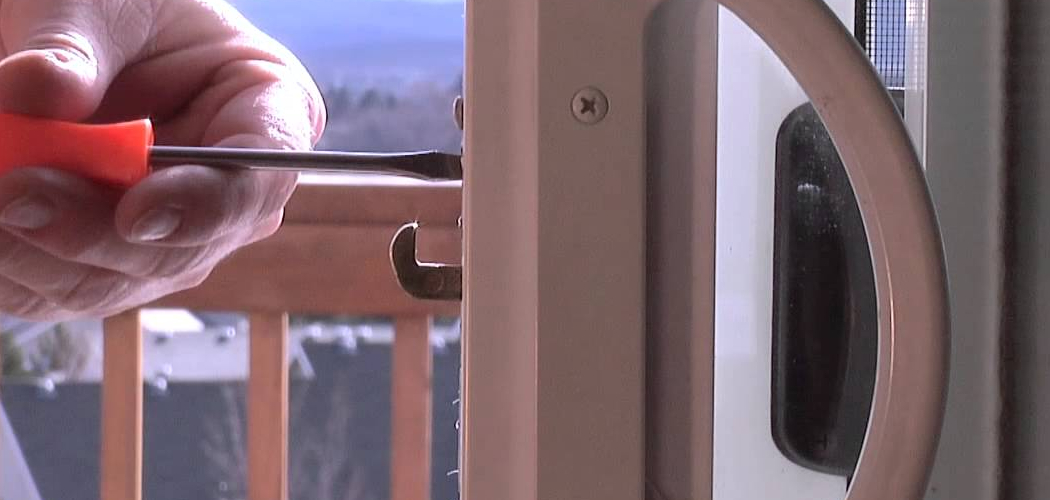Learning how to fix patio door lock issues is an essential skill that can save you time, money, and frustration. A malfunctioning patio door lock can compromise not only your home’s security but also its functionality, making the task of repairing it a priority.
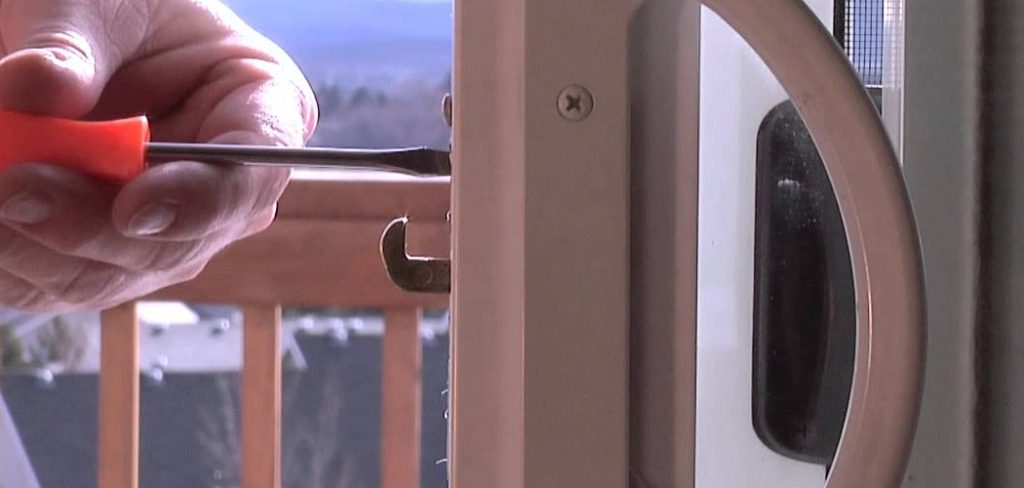
Whether the issue stems from a misaligned latch, a jammed mechanism, or simple wear and tear, fixing a patio door lock is often a straightforward process that almost anyone can handle with basic tools and knowledge.
This comprehensive guide is designed to walk beginners through everything they need to know about restoring a patio door lock to full working order. By identifying the problem, applying targeted solutions, and ensuring long-term maintenance, you’ll learn how to fix patio door lock problems effectively. With a little effort and guidance, you can restore your patio door’s security and smooth operation in no time.
Why Fixing a Patio Door Lock Matters
A functional patio door lock is central to your home’s safety, convenience, and overall efficiency. These locks not only keep intruders out but also ensure smooth daily use of one of the most important access points to your outdoor areas. While many homeowners may overlook small lock issues initially, ignoring these problems can lead to significantly worse damage over time.
Even minor lock troubles, such as a misaligned latch or stiffness in the mechanism, can compromise security or make it more difficult to lock and unlock your door. A faulty patio door lock can also lead to drafts, which may affect your home’s energy efficiency and create additional costs. Beyond practicality, repairing the lock helps maintain the aesthetic value of your patio doors—ensuring they look and function as intended.
Addressing patio door lock issues promptly also saves you the expense of hiring a professional locksmith in many cases. By learning to handle common repairs yourself, you gain confidence in maintaining your home’s functionality while keeping your living space secure and efficient.
Step-by-Step Guide: How to Fix Patio Door Lock
Step 1: Identify the Problem
The first step in learning how to fix patio door lock issues is diagnosing the specific problem. Begin by observing how the lock behaves. Does the key refuse to turn? Is the latch not aligning properly with the strike plate? Or is the locking mechanism overly stiff? Each issue requires a different approach, so a clear understanding is essential.
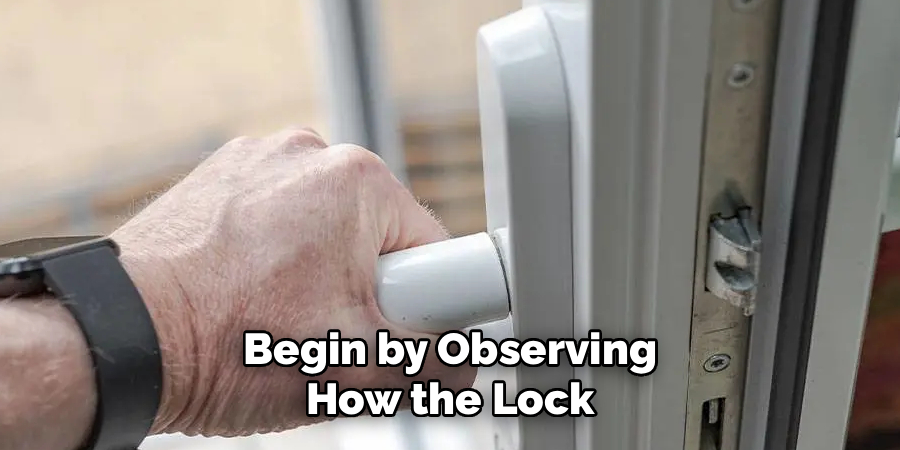
Test the lock by opening and closing the door slowly while engaging the locking mechanism. Pay attention to any unusual resistance, grinding noises, or misalignment. Check for visible wear or damage to the lock or door frame. Taking the time to pinpoint the problem ensures you address the root cause instead of applying temporary fixes.
Step 2: Clean the Lock Mechanism
A dirty or clogged lock can often be the root cause of issues like jamming or stiffness. Clean the mechanism by spraying a small amount of compressed air into the lock to remove debris. Follow this by applying a lubricant specifically designed for locks, such as graphite powder or silicone-based sprays, avoiding grease-based products that can cause buildup.
Insert and turn the key a few times to distribute the lubricant evenly throughout the mechanism. This simple step often resolves minor issues and prepares the lock for any further adjustments. Regular cleaning and lubrication can significantly extend the life of your patio door lock.
Step 3: Check the Door Alignment
The alignment of the door plays a crucial role in how the lock functions. If the door sags or has shifted from its original position, the lock and latch may no longer line up correctly. Inspect the hinges, rollers, and tracks for signs of wear, dirt, or looseness that might affect alignment.
Use a screwdriver to tighten any loose screws on the door’s hinges or adjust the rollers if the door operates on a track. Gently test the alignment by closing the door and observing whether the latch fits snugly into the strike plate. Adjustments at this stage ensure the lock mechanism functions smoothly without unnecessary strain.
Step 4: Tighten or Replace Loose Screws
Loose components in the lock assembly can disrupt its function and cause the lock to feel unstable. Examine all screws, including those securing the lock to the door and the strike plate on the frame. Tighten any that are loose using a handheld screwdriver, avoiding over-tightening, which can damage the material.
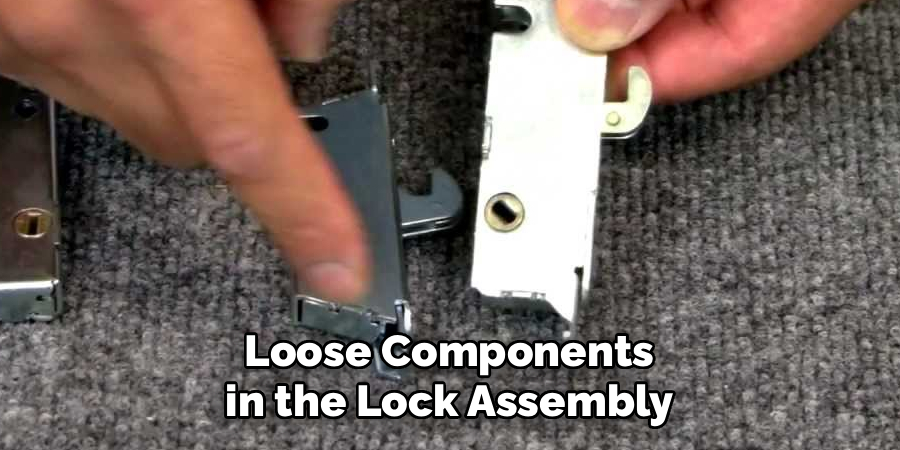
If a screw is stripped or cannot be tightened, replace it with a new one of the same size and type. Secure screws provide stability to the locking mechanism and prevent further misalignment or wear. Taking care of these minor details builds a more reliable lock system.
Step 5: Adjust or Replace the Strike Plate
A strike plate that isn’t properly aligned with the lock can prevent the door from latching securely. Mark the current position of the strike plate and examine whether its opening aligns with the latch. Adjust its position by loosening the screws, moving it slightly up or down, and re-tightening the screws.
If the strike plate is worn, bent, or damaged, replace it with a matching model. Make sure the new strike plate is installed at the correct height to accommodate the lock. Proper alignment between the latch and strike plate is a critical factor in ensuring your patio door lock functions as intended.
Step 6: Dismantle and Inspect the Lock
Sometimes, the problem lies deeper within the lock mechanism itself, requiring you to dismantle it for a closer inspection. Carefully remove the screws securing the lock to the door, then take apart the components, keeping track of their arrangement for reassembly.
Look for broken parts, such as damaged springs, bent internal pieces, or worn tumblers. If you notice extensive wear or irreparable damage, consider replacing the entire lock assembly. A thorough inspection provides clarity on whether repairs or replacements are necessary for long-term functionality.
Step 7: Install Replacement Parts, If Needed
If specific components within the lock require replacement, purchase compatible parts from a hardware store or the lock manufacturer. Common replacement parts include latch bolts, keys, and internal springs, all of which can usually be installed without professional help.
Install the new parts carefully, ensuring they fit securely within the lock assembly. Reassemble the lock and test it multiple times to confirm it operates smoothly. Replacing faulty components can restore your patio door lock to its original functionality with minimal cost and effort.
Step 8: Test the Lock’s Functionality
Once all adjustments and repairs are complete, test the lock thoroughly to confirm it works as expected. Close the door, engage the locking mechanism, and try turning the key or handle to verify smooth operation. Check that the door closes fully and the latch aligns perfectly with the strike plate.
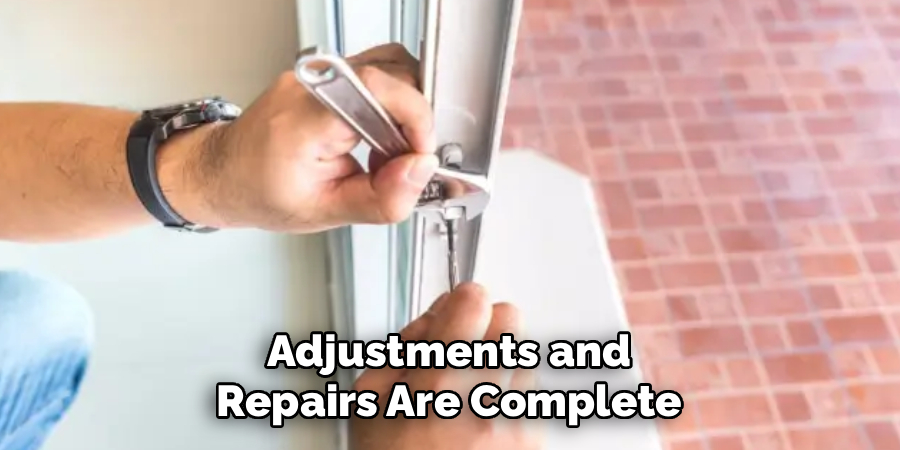
Testing ensures that all components work together harmoniously and that no further adjustments are needed. Verification at this stage also gives you confidence that your patio door lock is secure and effective.
Step 9: Maintain Regularly
To prevent future issues, establish a routine maintenance schedule for your patio door lock. Clean the mechanism every few months and apply a fresh layer of lubricant to minimize wear and tear. Inspect the alignment and screws periodically, addressing any changes or looseness promptly.
With proper maintenance, you can extend the life of your patio door lock and avoid frequent repairs. Keeping the lock in excellent condition ensures the ongoing security and functionality of your patio door.
Additional Security Tips
For added security, consider installing a secondary locking mechanism, such as a security bar or pin lock, to reinforce your patio door. These devices provide an extra layer of protection, making it harder for intruders to force the door open. Additionally, ensure that the glass panels of your patio door are made from tempered or laminated glass, which is more resistant to breakage.
You can also apply security film to the glass for increased durability. Finally, invest in motion-activated outdoor lighting near your patio area to deter potential intruders and enhance nighttime visibility. These simple measures can significantly improve the overall security of your patio door and home.
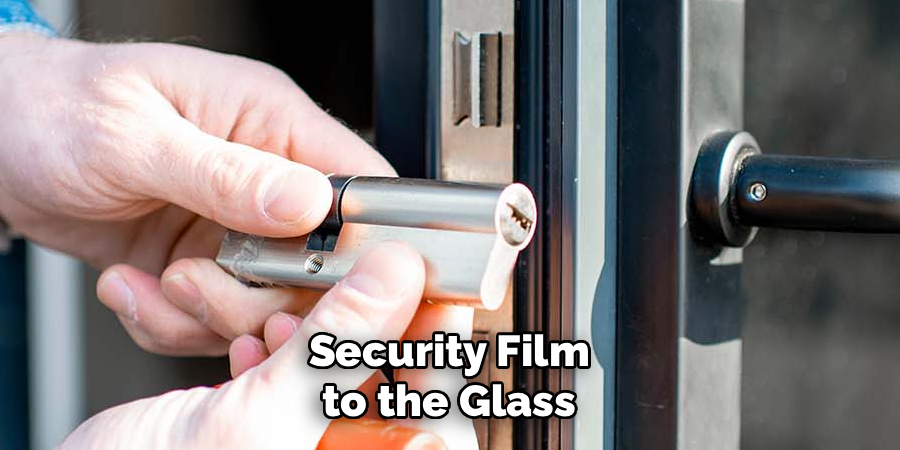
Frequently Asked Questions
What tools do I need to fix a patio door lock?
You will typically need basic tools such as a screwdriver, lubricant, and compressed air. Depending on the specific issue, other tools like a drill or sandpaper may also be necessary for lock alignment or replacement.
Why is my patio door lock jammed?
A jammed lock often stems from dirt and debris inside the mechanism or misalignment between the latch and the strike plate. Cleaning, lubricating, and adjusting the door can resolve most jamming issues.
Can I replace a patio door lock myself?
Yes, replacing a patio door lock is a manageable DIY task for most people. Ensure you purchase a compatible lock and follow the instructions for proper installation and alignment.
What type of lubricant should I use for my lock?
Always use a lubricant designed for locks, such as graphite powder or silicone-based sprays. Avoid grease-based lubricants, as they can attract dust and lead to buildup over time.
How often should I maintain my patio door lock?
Regular maintenance every 3–6 months is recommended. This includes cleaning the lock mechanism, lubricating moving parts, checking alignment, and tightening any loose screws.
Conclusion
Proper maintenance of your locks not only ensures their longevity but also enhances the security of your home. By following the recommended care tips, such as using appropriate lubricants and conducting regular inspections, you can prevent potential issues and keep your locks functioning smoothly. Remember, a well-maintained lock is an important part of your overall home security system.
Knowing how to fix patio door lock issues is a valuable skill that enhances your home’s security and functionality. By diagnosing the problem, cleaning and adjusting components, and replacing worn parts, you can restore your lock to excellent condition without professional help.
With the steps outlined in this guide, maintaining a functional patio door lock becomes a straightforward process. Start addressing lock issues today, and enjoy the peace of mind that comes with a secure and smooth-operating patio door!

